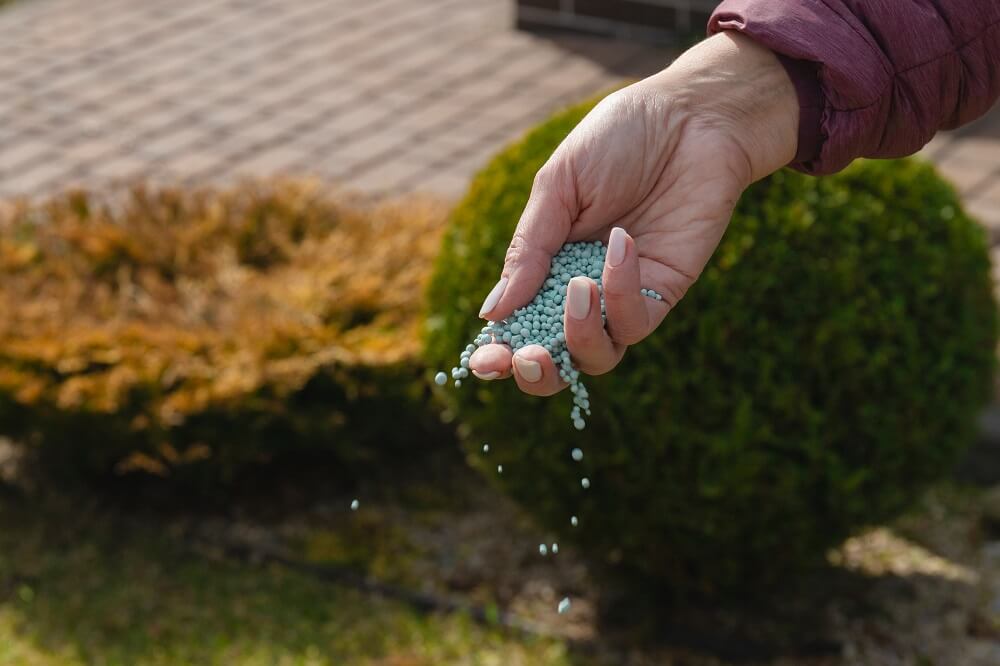
The question on the minds of many garden owners, whether they are novice green enthusiasts or experienced gardeners is: when to fertilise the lawn? Grass, like any other plant, needs the right dose of nutrients to grow healthy, thick and look stunning. However, it is not just about the fertiliser itself, but above all about the right time of application. A correctly timed fertiliser application can work wonders, while a poorly timed application can do more harm than good. In this article, we will try to unravel the mystery of the best time for this important care activity and give you tips on how to effectively supply your grass with the necessary nutrients.
Proper lawn fertilisation is just as important as regular mowing or watering. With the right crop support measures Your grass will benefit not only in terms of beauty, but above all in terms of health. For the lawn, like all plants in the garden, needs nutrients to help it develop properly and to fight off various pests and diseases. A properly fertilised lawn is therefore a guarantee of a beautiful and healthy garden all year round.
After the cold and often snowy winter months, the lawn needs special care to return to full life. Winter conditions such as frost, snow or even stagnant water can cause the grass to become weakened and more susceptible to various diseases or pests. Spring fertilisation is therefore not only a matter of aesthetics, but above all the health of our vegetation.
When precisely fertilise the lawn after winter? Preferably at a time when you are seeing the first signs of spring revival in your garden. The ground is beginning to soften and young blades of grass are breaking through the surface. These herald the arrival of the right time to provide your lawn with the necessary nutrients. It is important to choose fertilisers specifically designed for use in early spring. Rich in nitrogen, these help to rebuild the lawn, stimulate vigorous growth and help to regenerate areas that have suffered during the winter. In addition, a properly selected spring fertiliser can strengthen the grass in its fight against weeds and prepare it for the coming warmer months
Spring lawn care does not end with a single fertilising application just after the frost has passed. However, when to fertilise the lawn in spring for the second time? It is a good idea to carry out the second fertilisation step later in the spring, around May. You are wondering which fertiliser for the lawn in spring best to choose? It is now worth focusing on multi-nutrient fertilisers, which provide your lawn not only with nitrogen, but also with other essential nutrients such as phosphorus and potassium. These ingredients promote rooting, strengthen the lawn’s resistance to drought and disease and improve the colour and structure of the grass. Regular fertilisation at the right times in spring, tailored to the needs of the lawn, is the way to keep it healthy and beautiful throughout the season.
Certainly, many gardeners are wondering, whether it is possible to fertilise a lawn in the rain. The subject mentioned is sometimes controversial among gardening enthusiasts. On the one hand, moist soil makes it easier for the fertiliser to spread and be absorbed by the roots of the grass, sometimes speeding up and enhancing its effects. A light rain that gently moistens the soil can therefore be the perfect time to apply fertiliser, especially those in granular form. On the other hand, fertilising the lawn during heavy rainfall carries a certain risk that the fertiliser will quickly rinse off the surface of the lawn. This not only reduces its effectiveness, but can also lead to groundwater and surface water being contaminated with excess mineral nutrients.
Additionally, walking on a wet lawn while fertilising sometimes leads to unwanted compaction, which can stunt lawn growth. Therefore, when deciding whether to fertilise your lawn on a rainy day, it is worth paying attention to the strength and duration of the rainfall and the condition of your lawn to make the most informed choice.
Many horticultural experts recommend early autumn as the key time to complete lawn fertilisation. Fertilising the lawn later, when the days become shorter and temperatures drop, can encourage vigorous grass growth, not always beneficial to the health of the grass in winter conditions.
When it comes to young lawns, i.e. those after recent sowing, the fertilisation process is slightly different. When to fertilise a lawn after sowing? It is best to wait until the grass has reached the right height, which is usually a few weeks after sowing. Then you can apply a nitrogen-rich fertiliser to promote vigorous growth of the young grass. However, make sure that you do not fertilise immediately after sowing, as fertilising too soon can damage the germinating seed.